|
|
|
|
Correlation-based wave-equation migration velocity analysis |
Next I show the results of applying the first term of the tomographic operator in equation (10). First, I use the true reflector depth to create the reference image and use it in our method to generate the gradients for the three anomalies, as shown in figures 2(a), 2(c) and 2(e). Finally, I use the apparent reflector depth, i.e. the depth extracted from the zero-subsurface-offset image, to create the reference image and generate the gradients shown in figures 2(b), 2(d) and 2(f). The correlation lags were picked automatically by choosing the maximum value of the cross-correlation function.
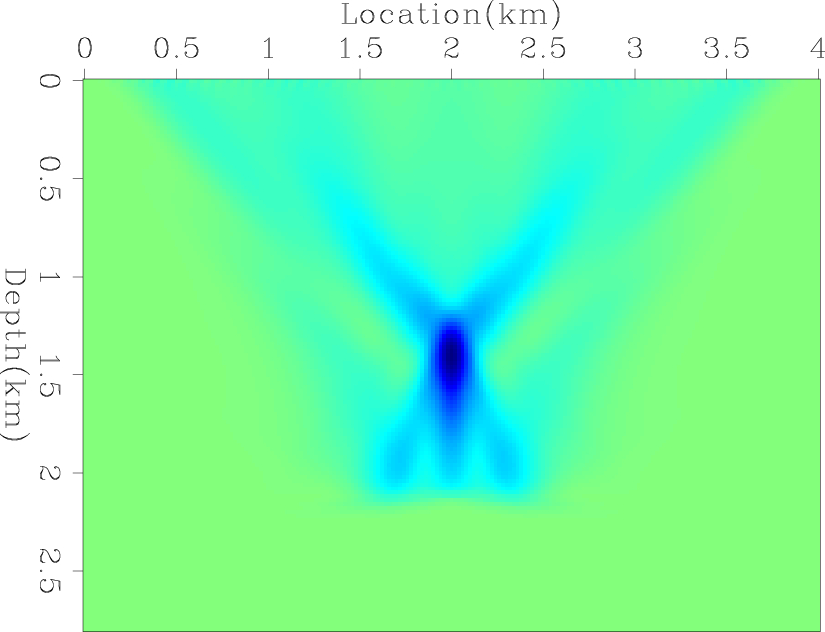
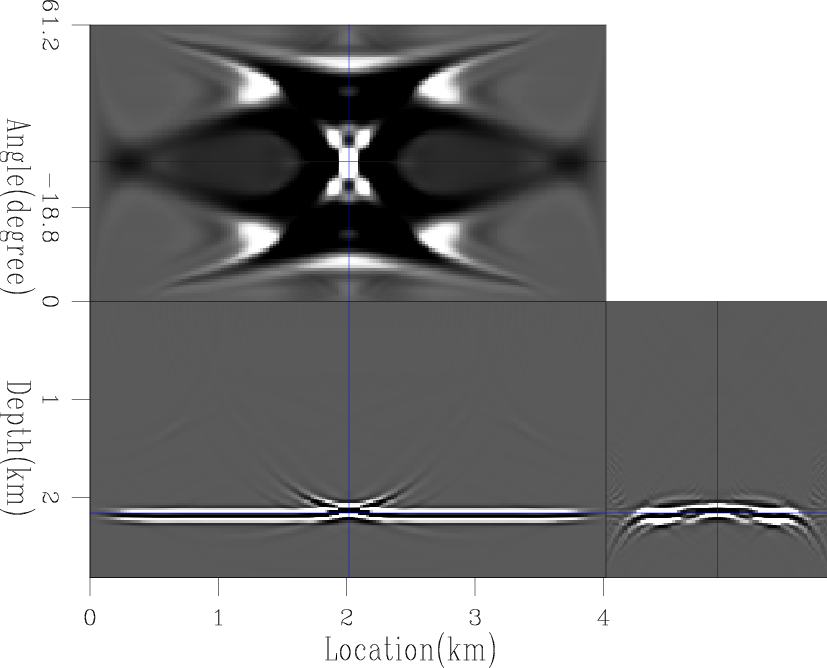
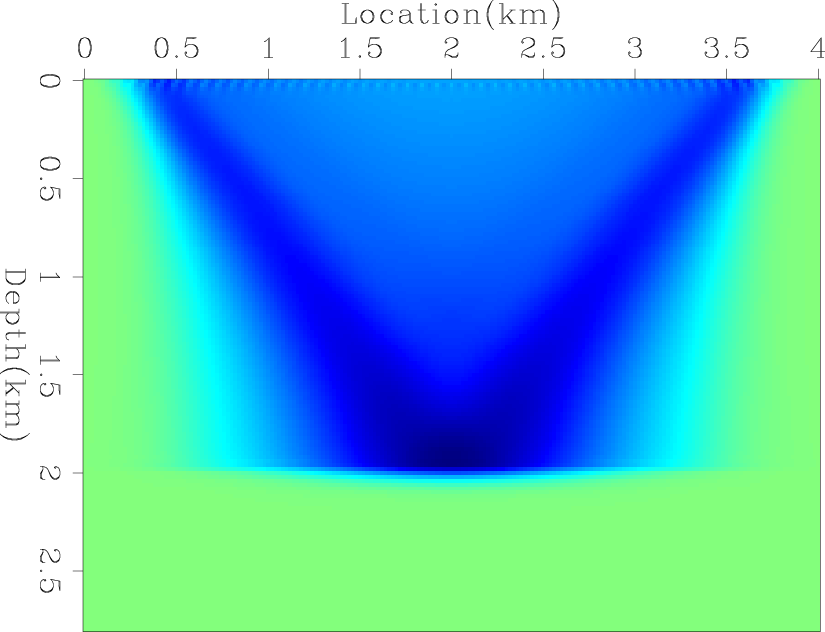
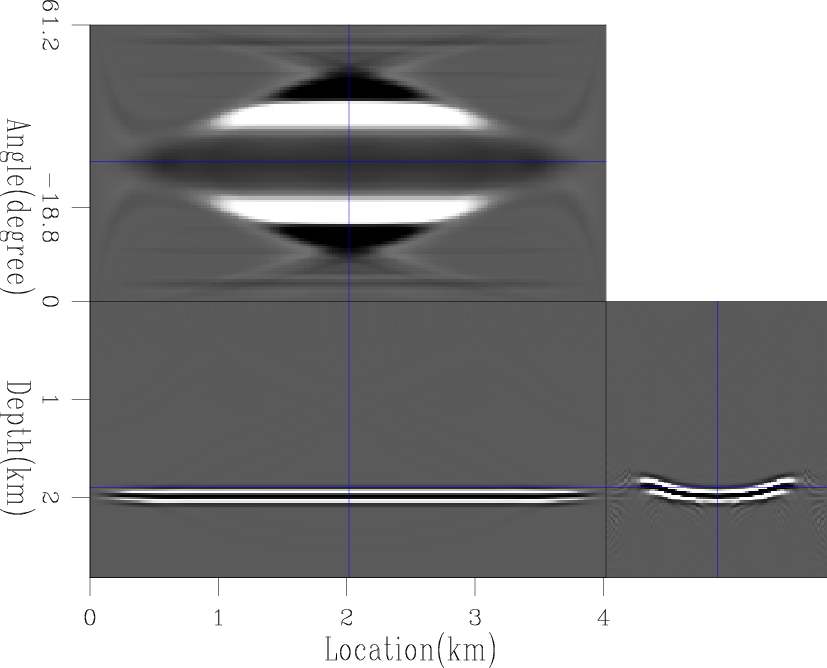
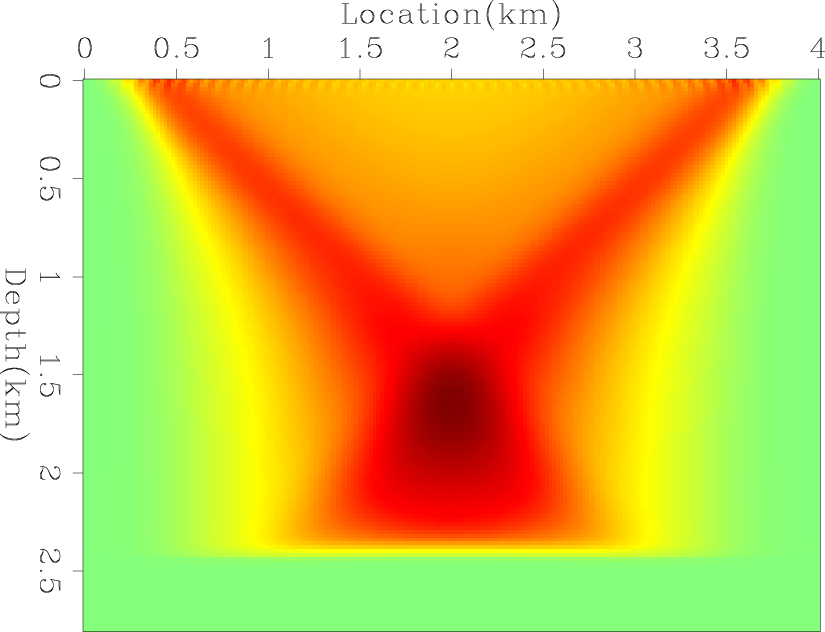
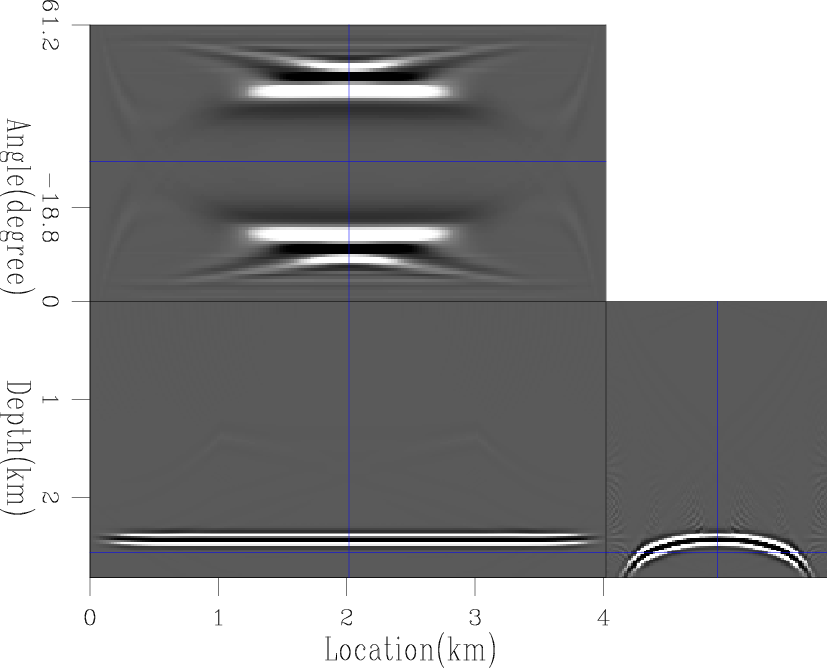
|
|---|
|
dS1,adcig1,dS2,adcig2,dS3,adcig3
Figure 1. The left column shows the optimum WEMVA gradient of (a) a negative Gaussian anomaly, (c) a negative bulk shift and (e) a positive bulk shift. The right column shows the corresponding ADCIGs. |
|
|
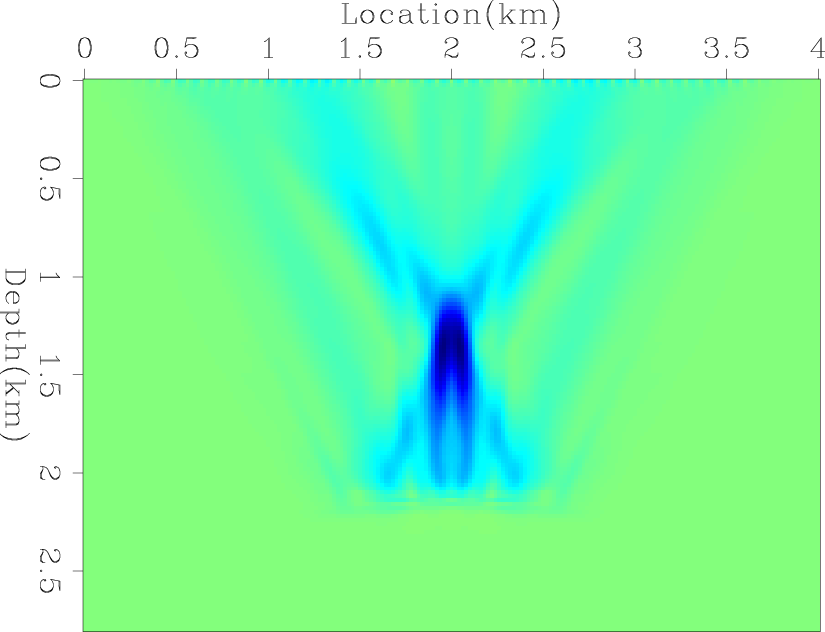
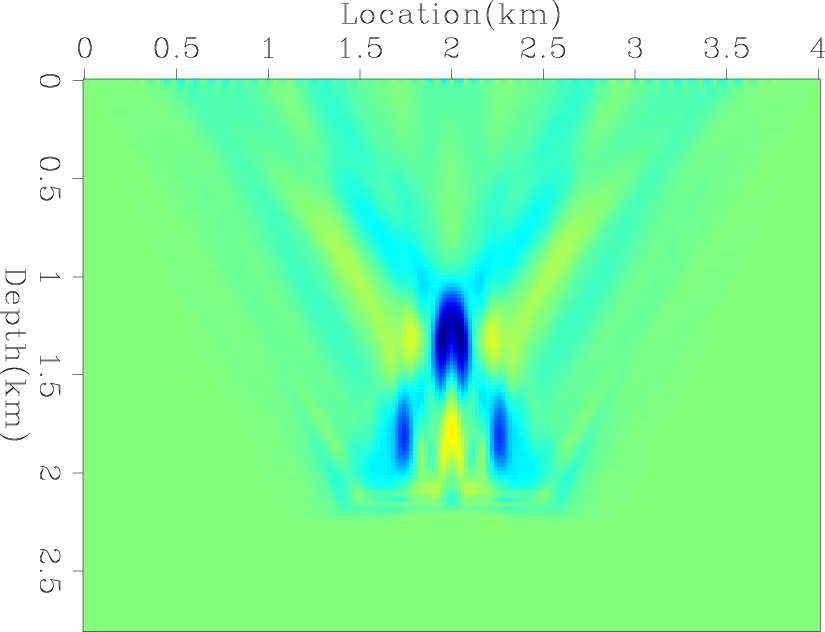
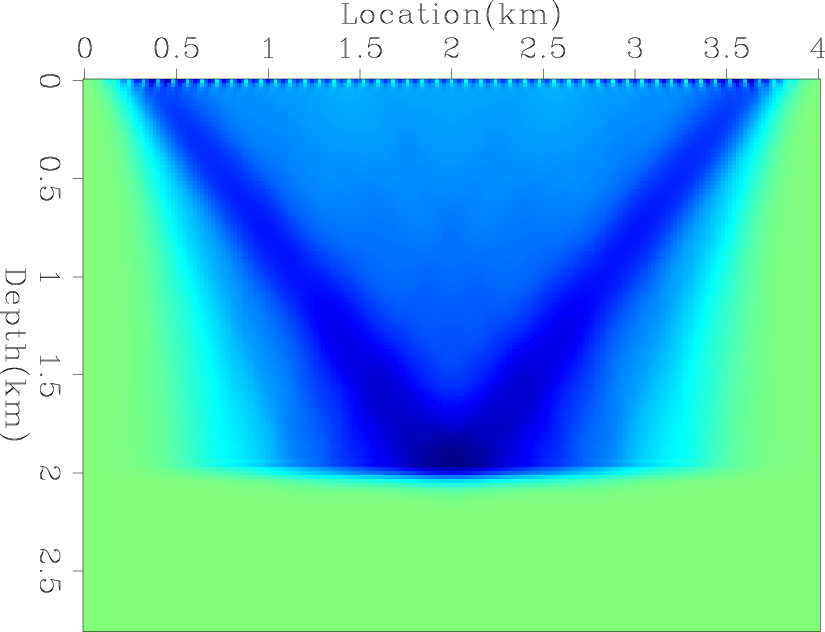
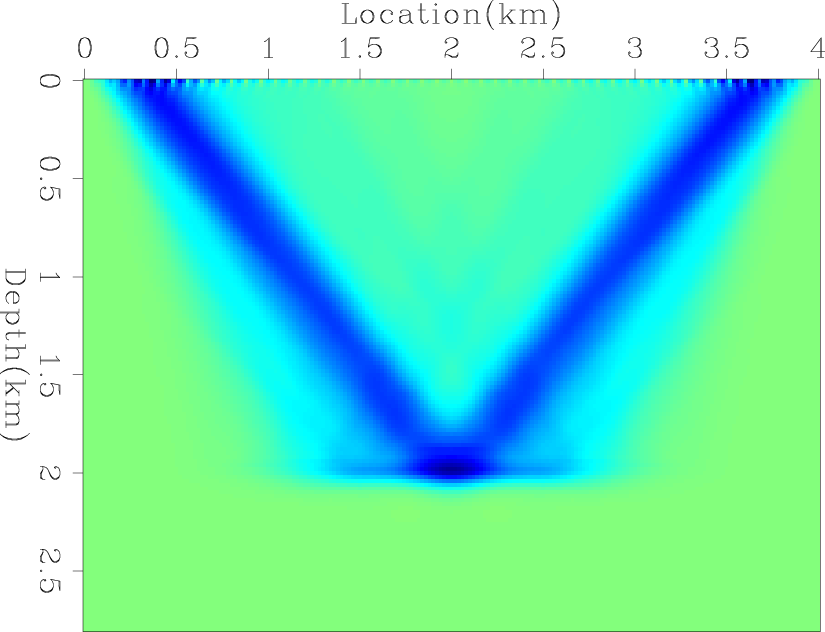
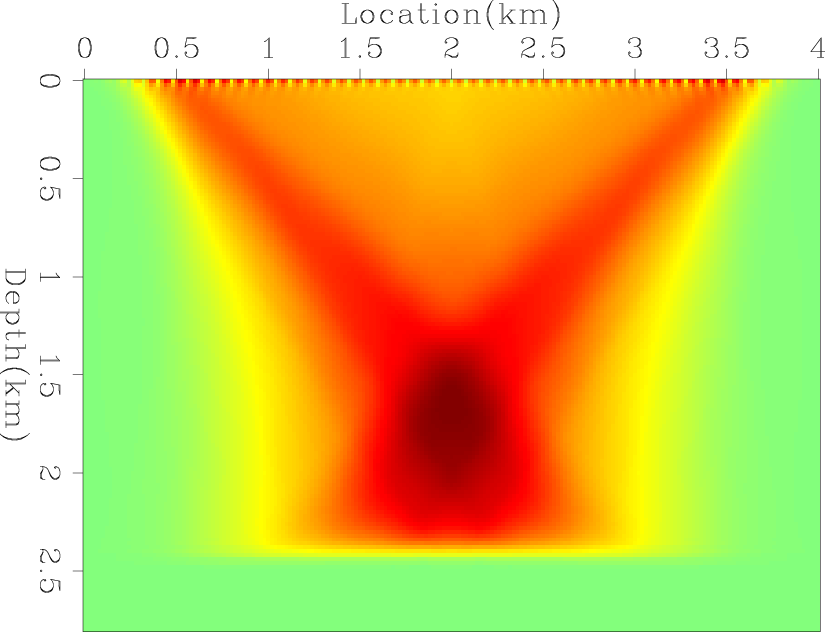
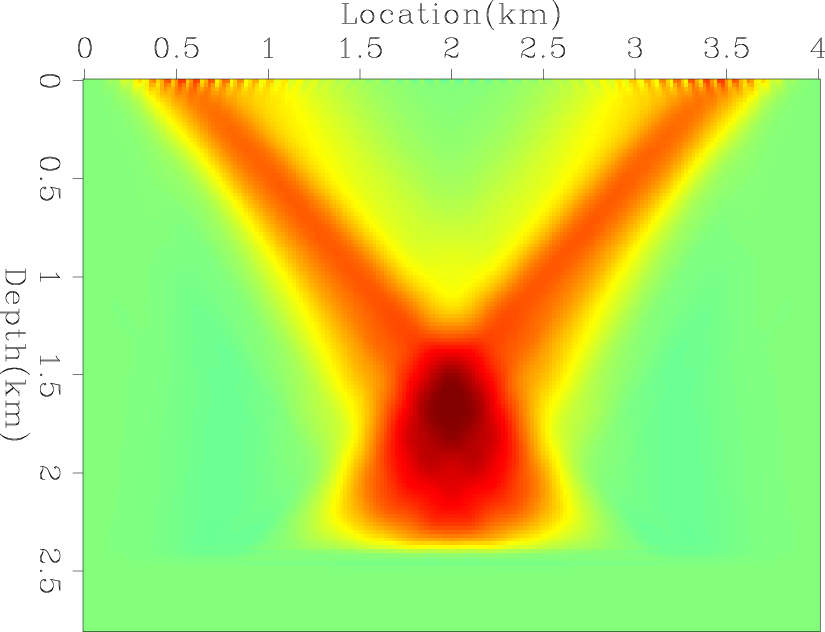
|
|---|
|
dS221,dS321,dS222,dS322,dS223,dS323
Figure 2. The left column shows the correlation-based WEMVA gradients using the true depth for the reference image. The right column shows the correlation-based WEMVA gradients using the apparent depth for the reference image. |
|
|
|
|
|
|
Correlation-based wave-equation migration velocity analysis |